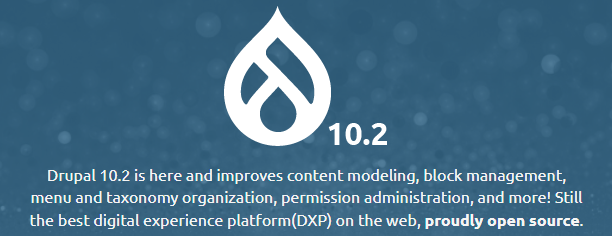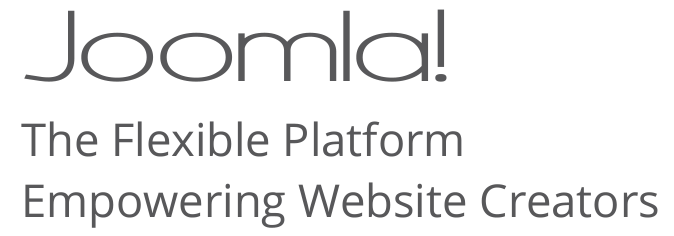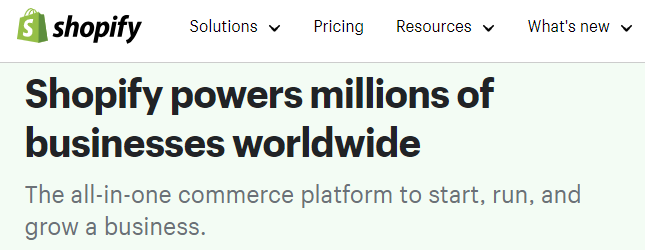Explore the top seven content management system (CMS) platforms of 2024 and their impact on content creation. Learn how they’re simplifying digital marketing and enhancing accessibility.

1. WordPress: The Content Creation Powerhouse
WordPress is a market-leading open-source CMS platform. It lets people create blogs, websites, and mailing lists without coding expertise. For example, nDash has a WordPress integration that allows users to push content from the platform to their blogs seamlessly.
The tool’s user-friendly interface and customizable themes enhance page appearance and user experience. It also features an extensive plugin ecosystem capabilities, allowing you to extend your website’s functionality.
Many blogs and news websites, including TIME Magazine and TechCrunch, use WordPress. It’s also possible to use this tool to create ecommerce stores, community forums, and portfolios.
Benefits of WordPress:
- User-friendly CMS platform that is easy to understand and navigate.
- Wide range of plugins to increase customization.
- Promotes SEO best practices and includes plugins designed to improve SEO rankings.
Limitations of WordPress:
- Managing and updating plugins regularly, which can be time-consuming, is crucial for security and functionality.
- Plugins can slow down your website’s page loading speed, which can frustrate your audience and damage your website’s Google ranking.
- Though secure at its core, WordPress’s plugin dependence opens security holes if they’re outdated or poorly coded, requiring constant vigilance and raising the stakes for plugins handling sensitive data.

Action items:
- Conduct a WordPress theme market research to identify themes that best fit your brand identity.
- Organize a training session or workshop for your team on SEO best practices using WordPress tools.
- Schedule a regular website audit to identify and remove any unused plugins that might affect performance.

2. HubSpot: Streamlining Content Creation and Marketing
HubSpot is an all-in-one CMS designed to help marketers streamline their content creation strategies with their marketing strategies.
The HubSpot CMS can be integrated with HubSpot’s customer relationship management (CRM) software, which tracks customers’ interactions with the website. Integrating these platforms means that all activity on your website can be sent straight to your CRM to be analyzed and provide you with actionable insights.
Large and diverse companies turn to HubSpot to fuel their inbound marketing efforts. According to Thomson Data, examples include IT firm Accenture, review platform Trustpilot, and fitness powerhouse Peloton.
Benefits of HubSpot:
- Businesses can use it as an all-in-one tool for business management, sales, marketing, and operations.
- It includes extensive analytics and reporting that helps you make informed decisions.
- This tool includes a centralized customer database, guaranteeing accurate and up-to-date information. This database then gives you a comprehensive understanding of each customer’s journey.
Limitations of HubSpot:
- Its free version offers limited features and can get expensive quickly, depending on your requirements.
- It can be challenging to customize templates yourself, as some require CSS knowledge.
- Lower-tier packages don’t allow A/B testing.

Action items:
- Develop a content calendar that aligns with your marketing strategy using HubSpot’s planning tools.
- Create personalized marketing campaigns using the data from HubSpot’s CRM integration.
- Explore and experiment with HubSpot’s inbound marketing methodologies to attract more visitors to your site.

3. Drupal: Advanced Content Creation for Complex Sites
Drupal is a versatile and adaptable content management system providing various customization features for advanced users. That makes it a well-suited choice for large enterprises with complex website needs.
Because user safety is a priority, the platform prioritizes rigorous security measures. To uphold this commitment, every submitted model undergoes a meticulous review by the team before it’s available to the public. Drupal’s flexible API architecture also means the CMS platform can scale alongside the organization’s needs.
Many large organizations, including the State of Georgia, Steward Healthcare, and Fannie Mae, used Drupal to build complex websites
Benefits of Drupal:
- It’s highly flexible, scalable, and secure.
- It’s fast and responsive and offers an excellent user experience.
- It features advanced development capabilities.
Limitations of Drupal:
- It has a steep learning curve, making it difficult for non-developers to manage and customize.
- Its complexity means it typically requires specialized skills and expertise, which can be costly.
- Backward compatibility isn’t available, and upgrades take time and effort.

Action items:
- Plan and execute a security strategy using Drupal’s advanced security features.
- Consider leveraging Drupal’s API architecture for custom integrations with other business systems.
- Organize a developer training program or workshop focusing on Drupal’s advanced development capabilities.

4. Squarespace: The Aesthetically Pleasing Builder
Squarespace is a design-centric platform known for its aesthetic appeal. It offers a variety of beautiful templates suitable for ecommerce platforms, blogs, and portfolios.
This CMS platform boasts a user-friendly drag-and-drop builder. With it, users can move any component around the page, crafting your website to your exact vision.
Brands that have used Squarespaces to create visually driven websites include Minna, Supernatural Kitchen, and Flaneur Magazine.
Benefits of Squarespace:
- Squarespace’s design capabilities mean it’s an excellent option for organizations experimenting with different kinds of content creation.
- It has a powerful range of ecommerce features designed to manage orders and sell products online.
- It offers a range of integrated tools, including the ability to generate email campaigns and manage appointments.
Limitations of Squarespace:
- While it offers many templates, it offers limited customization options.
- It offers limited support for third-party integrations compared to other options.
- Advanced features require pricier tiers, potentially exceeding the costs of platforms with more inclusive pricing.

Action items:
- Develop a brand style guide to ensure consistent use of Squarespace’s design capabilities across your website.
- Evaluate and potentially integrate Squarespace’s email campaign and appointment management tools into your marketing strategy.
- Conduct user experience tests to ensure your website’s design is effectively engaging your target audience.

5. Wix: The User-Friendly Website Builder
Wix is known for its ease of use. It features a simple drag-and-drop interface and extensive template selection. It also provides access to Wix Artificial Design Intelligence (ADI), which allows you to create a fully customized website for your organization.
Small businesses and people creating personal websites turn to Wix for its ease of use.
Benefits of Wix:
- It has a simple, user-friendly interface.
- It features lots of premade, beautiful templates to choose from.
- Customize templates easily.
Limitations of Wix:
- You have limited flexibility to make changes once you’ve built your website, hindering scalability.
- No third-party apps or plugins are available, so it can be difficult to automate processes.
- The dashboard provides only basic analytics and tracking, hindering your ability to measure performance.

Action items:
- Create a prototype website using Wix ADI and gather feedback from potential users for improvements.
- Develop a long-term plan for your website, considering Wix’s limitations in scalability and customization.
- Explore external tools or services that can supplement Wix’s basic analytics and tracking capabilities.

6. Joomla: The Versatile Open-Source Solution
Joomla is a versatile platform that allows you to select different templates for different pieces of content. The abundance of choices grants you greater freedom to experiment with your content creation strategies. This highlights the benefit of having many options: the increased opportunity for experimentation.
The versatility of this CMS platform means it’s suitable for a wide variety of websites. You can also use it to create corporate websites, blogs, and social networking websites. Its range of extensions also means you can use it to build ecommerce websites.
Benefits of Joomla:
- It’s intuitive and user-friendly.
- It has many plugins, extensions, and templates available to increase customization.
- There’s multilingual support, which makes it easier to create multilingual websites.
Limitations of Joomla:
- It has a steeper learning curve than many other content management systems due to its advanced customization options.
- Some users report performance issues — especially when using the CMS to host larger, more complex websites.
- You must update plugins regularly to maintain security.

Action items:
- Host a Joomla community event or join online forums to stay updated with the latest extensions and updates.
- Develop a multilingual content strategy to leverage Joomla’s multilingual support.
- Regularly back up your website data, given Joomla’s extensive customization options and potential performance issues.

7. Shopify: The E-commerce Specialist
Shopify is an ecommerce platform designed for those who want to sell products through creating online stores and point-of-sale systems.
t features a store builder, inventory and order management, a payment system, SEO, and analytics tools. On top of that, it offers access to an app store, letting you further extend its functionality with various optional plugins and extensions. There are many themes, and setting up an online store is quick and straightforward.
Successful online stores set up on Shopify include Beefcake Swimwear, Allbirds, and Verve Coffee Roasters.
Benefits of Shopify:
- The specialized nature of the platform means it’s easy to use and has many customization options.
- It has many different plans available, which organizations can upgrade to as they scale.
- Shopify stores are optimized for mobile, helping attract and retain as many customers as possible.
Limitations of Shopify:
- It’s designed specifically for ecommerce stores.
- Fees for apps, transactions, and credit card payments can quickly increase, reducing profits.
- Some cheaper plans charge additional transaction fees for organizations not using Shopify Payments.

Action items:
- Investigate and integrate suitable Shopify apps that can enhance your online store’s functionality.
- Develop a mobile marketing strategy to take advantage of Shopify’s mobile optimization.
- Conduct a financial analysis to understand the impact of Shopify’s transaction fees and choose the most cost-effective plan.
Choosing the Right Content Creation Platform in 2024
In 2024, these seven CMS platforms stand out above the noise. Each platform has unique strengths, catering to different needs and preferences in the digital marketing industry.
Make an informed choice and select the best CMS platform for you by assessing your own goals and requirements.
About the Author

Aimee Pearcy is a tech journalist and a B2B SaaS copywriter with over five years of experience. Check out her writer profile to learn how her experience can help level up your content strategy: Aimee Pearcy.
